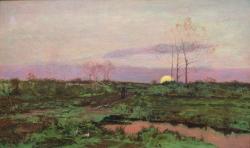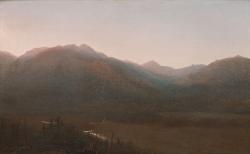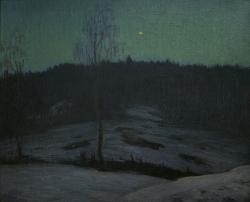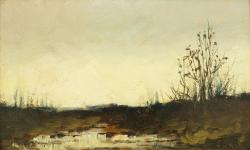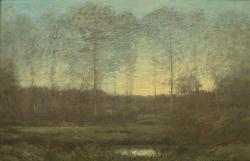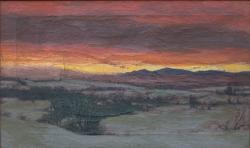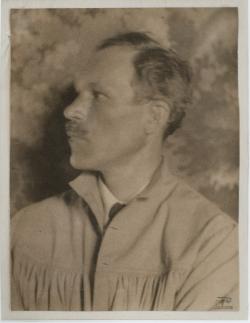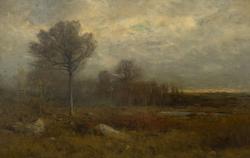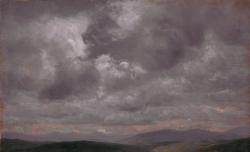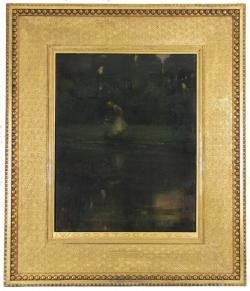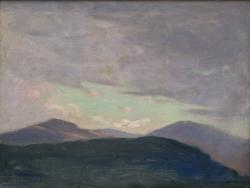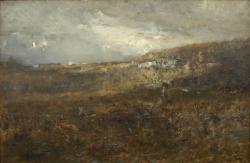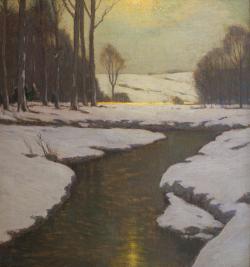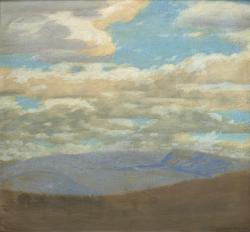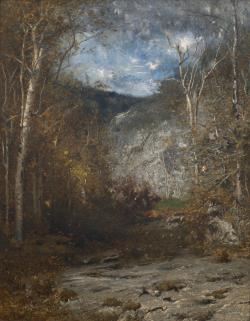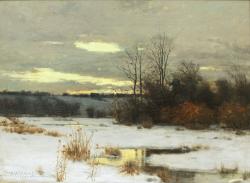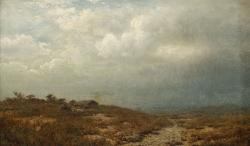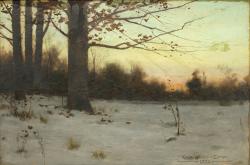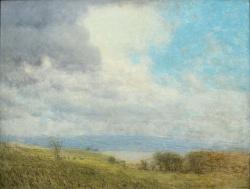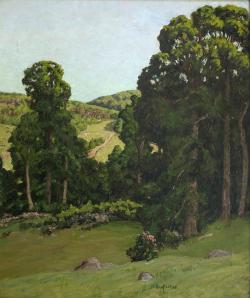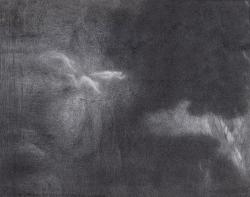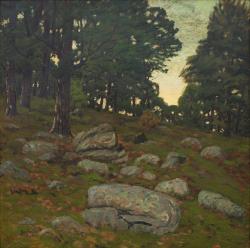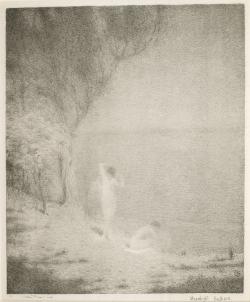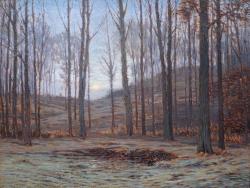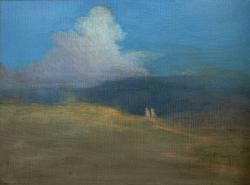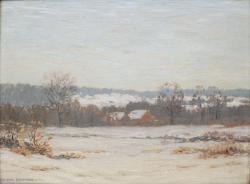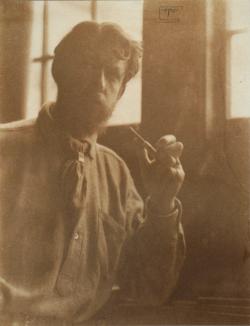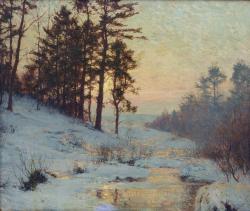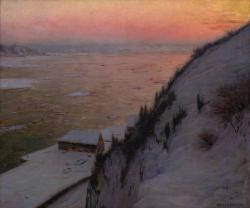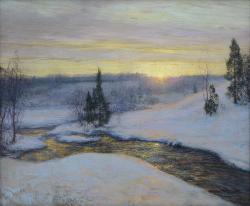Like those of George Inness, the early landscape paintings of other artists who became Tonalists also revealed affinities with the Hudson River School. Homer Dodge Martin (1836–1897), Jervis McEntee (1828–1891), and Alexander Helwig Wyant, for example, all matured as painters when the Hudson River School was in its prime. Martin and McEntee studied with artists associated with the school, and Wyant was inspired to become a landscapist after seeing some of Inness’s work in an exhibition. While their early paintings employed detailed brushstrokes and frequently featured open vistas in full daylight, their later compositions became looser in paint handling, with evocative, more intimate glimpses of nature in subdued light. McEntee, not traditionally associated with Tonalism, made his intentions clear: “All art is based upon a knowledge of Nature and a sympathy for her; but in order to represent her it is not necessary to make a thing exactly like a thing. Imitation is not what we want, but suggestion…” (Endnote 2)
A later generation of artists, and the largest group in this exhibition, worked solely in a Tonalist style. Some studied with Inness or sought out Whistler, others saw their work in exhibitions or were influenced by those already immersed in the style, as it was one that prevailed at the end of the nineteenth century. Just a sample in this exhibition includes the softly glowing evening scenes of Carl Eric Lindin (1869–1942), the muted colors of the rocky hillsides favored by Ben Foster (1852–1926), and the sun filtered through milky skies in landscapes by Leonard Ochtman (1854–1934).
Other painters explored more than Tonalism. Walter Launt Palmer, for example, moved back and forth between Impressionism, characterized by short brushstrokes, pure colors, and scenes depicted in direct sunlight, and the subtler range of color and moodiness of Tonalism, demonstrating that the two approaches were not mutually exclusive. Agnes Richmond (1870–1964) began her career working in a rich Tonalist mode but became better known for her more brightly lit portraits painted with saturated colors.
Tonalism has often been discussed as old-fashioned rather than avant-garde, and its reputation plummeted in the twentieth century. In fact, in a mid-century survey of American painting the author wrote that “this movement is today completely forgotten.” (Endnote 3) Some of this may have to do with the dark, sometimes murky palette, the focus on mundane (though often beautiful) subject matter, and the retreat from depicting the contemporary world. Much about Tonalism, however, looks forward to Modernism and the subtle exploration of color relationships not bound by representation with which artists experimented in the twentieth century, sometimes leading to total abstraction. This is seen, for example, in the increasingly ethereal work of John Francis Murphy (1853–1921), in the thickly painted surfaces of the canvases of Charles Melville Dewey (1849–1937) that vie with the subject, or the opposite, in the thinly applied pigments that cast a veil over the landscapes of Leon Dabo (c. 1864–1960).
Endnotes:
2. Jervis McEntee in George William Sheldon, American Painters: With Eighty-three Examples of Their Work Engraved on Wood, London: Cassel Petter & Galpin; New York: D. Applewood and Company, 1879, pp. 51-52 as quoted in Lee A. Vedder, “Jervis McEntee: Painter-Poet of the Hudson River School,” in Jervis McEntee: Painter-Poet of the Hudson River School, Samuel Dorsky Museum of Art, State University of New York at New Paltz, 2015, p. 13.
3. E. P. Richardson, Painting in America: The Story of 450 Years, Thomas Y. Crowell Company, New York, 1956, p. 368, n. 5.



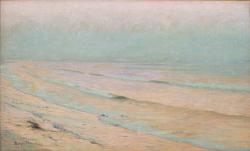
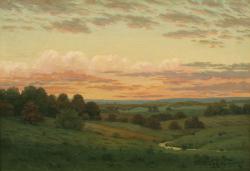
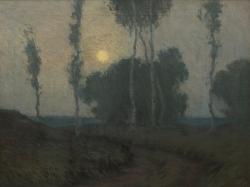
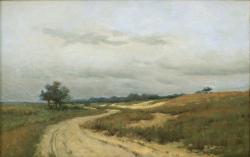
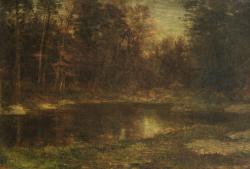
![Carl Olaf Eric Lindin, [Trees]](https://nysm.nysed.gov/sites/default/files/styles/250px_wide/public/2.19_lindin_trees.jpg?itok=wyb2Bcw0)
